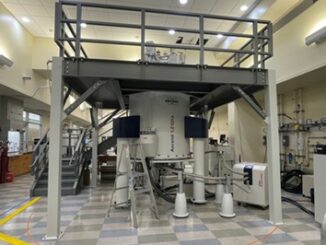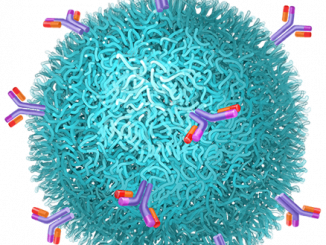SEPMAG, a developer of solutions for magnetic activated cell isolation, explains the basics of the process in a recent blog by company Founder and Chief Scientific Officer, Lluis M. Martínez, PhD.
The objective of magnetic activated cell isolation or macs cell sorting is to enrich a specific cell type from a mixed population.
The versatility and specificity of magnetic bead cell isolation is made possible by functionalized bead surfaces that specifically recognize a molecule or antigen(link) on the surface of a target cell. Magnetic beads are composed of a ferrous iron-oxide core surrounded by a polymer shell, or a magnetic ‘pigment’ embedded in a polymer matrix.
The size of the beads affects their behavior in a magnetic field.
If the beads are small enough, they will be paramagnetic, meaning that they have no permanent magnetism in zero magnetic field, but will rapidly become magnetized and demagnetized when an external magnetic field is applied and removed respectively. Magnetic bead cell isolation can be completed in a single vessel without the need for a centrifuge or disposable columns.
The behavior of magnetic beads is dependent on bead size.
Magnetic beads range from a few nanometers to a few micrometers in size. Magnetic nanoparticles are often irregularly shaped, have slower magnetic separation kinetics due to a lack of chain formation, and in some cases have been found to enter the cell through the cell membrane. Magnetic microbeads, on the other hand, are spherical, have a narrower size distribution and form cooperative chains during magnetic isolation. As a result, microbeads have a more predictable behavior during magnetic bead cell isolation and significantly decrease separation time. They also are too large to enter the cell and can result in enriched populations of cells in a more ‘natural’ state.
Macs Cell sorting process
Magnetic isolation can be achieved with positive or negative separation. Positive separation techniques recognize and conjugate the target cell. Those targets are isolated and retained at the edges of the container by magnetic separation while the remaining unwanted solution is removed and exchanged with fresh buffer.
In negative selection, the magnetic beads are functionalized to recognize the unwanted cells.
These are then removed from solution by magnetic separation and the remaining targets are decanted and retained. One benefit of negative selection is that the target cells are not conjugated to the magnetic beads at any point in the process. However, negative selection may lack the specificity of positive selection and may require multiple separation steps.
Within the context of magnetic cell separation technologies, the tube-based method offers distinct advantages to its alternative, which involves passing cells through a dense column-matrix. Tubular cell separation is fully implemented in a single vessel. Magnetic beads are added to a cell-sample, which is incubated. Targeted cells are pulled toward the magnet when its power is applied, effectively separating cells with attached beads. Properly implemented, this process eliminates undue cell stress that can be generated by column-based separation methods or from exposure to iron, significantly diminishing the risk of experimental procedures negatively impacting cell function and phenotype.
This article explains the technology and advantages of magnetic bead cell isolation. If you are interested in knowing more about this process, download our free basic guide to magnetic bead cell sorting:
Advantages of Cell Separation through Magnetic Beat Sorting (MBS)
Magnetic Bead Sorting generates a simple method for cell sorting, as unlabeled cells without attached beads separate from those treated by beads. Appropriately implemented – as, for instance, a pre-enrichment procedure prior to flow cytometry-sorting – MBS can significantly diminish the time required to complete the sorting process, simultaneously reducing the total quantity of cells that need to be sorted. However, if a greater quantity of cells are needed for analytical purposes, cell populations can be augmented more readily than with other cytometric methodologies.

MBS offers higher selectivity of separation without enacting complex protocols or relying on costly lab-equipment. Process and outcomes are more stable than electric-field separation technologies or other methods of separation. MBS generates extended sample enrichment potential if additional analyses – chromotagraphic/electromigratory – are required. Liquid-phase kinetics are enabled, leading to enhanced isolation of targeted cells. Repeated washing processes are unnecessary, yet cell samples are generally pure, unaltered and viable.
Separation of target cells with magnetic beads is compatible with the majority of contemporary life science/biomedical techniques and applications. Tubular cell sorting methods are gentler than alternative techniques, offering less threat of contamination from the host cell population or stress to cells caused by more complicated separation regimens. It is very adaptable, effective with small or large cell populations.
Remember to download The basic guide to magnetic bead cell separation in order to learn much more about magnetic activated cell sorting:
By Lluis M. Martínez, SEPMAG Chief Scientific Officer

Founder of SEPMAG, Lluis holds a PhD in Magnetic Materials by the UAB. He has conducted research at German and Spanish academic institutions. Having worked in companies in Ireland, USA and Spain, he has more than 20 years of experience applying magnetic materials and sensors to industrial products and processes. He has filed several international patents on the field and co-authored more than 20 scientific papers, most of them on the subject of magnetic particle movement.



